2021 Prefabricated Wood Structure Forum held in Guangzhou
The 2021 Prefabricated Wood Structure Forum was organized by Canada Wood China (CW China) in Guangzhou on December 1st. The theme of the forum was “Modern prefab solutions, building towards carbon neutralization,” and the event attracted more than 170 attendees representing government associations, industry organizations, real estate developers, architects, designers, and academics. The presentations were broadcast online using Canada Wood’s Online Classroom, reaching over 1,437 views and resulting in 289 new registered users for the online platform. This hybrid approach helps to provide opportunities to engage with industry professionals on-site at the event, while also making the information accessible to others across China.
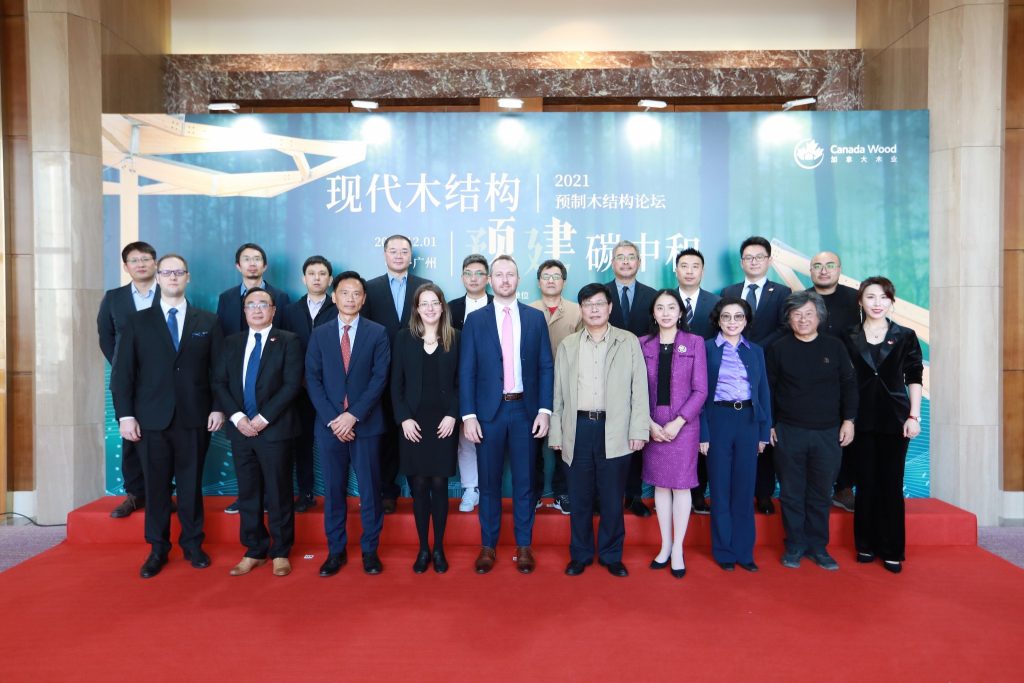
The event was organized with a strong set of supporting partners, including the Consulate General of Canada in Guangzhou, the China Office of British Columbia, the Guangdong Provincial Construction Sustainable & Prefabricated Industry Association – Wood structure branch, the Guangdong Engineering Exploration & Design Association – Private Enterprise Branch, the Guangdong Building Materials Association – Prefabricated Construction Branch, the Guangzhou Engineering Exploration & Design Association, the Building Industrialization Association of Shenzhen, the Foshan Prefabricated Construction Association, the Yangcheng Design Alliance and the South China University of Technology Architectural Design and Research Institute.
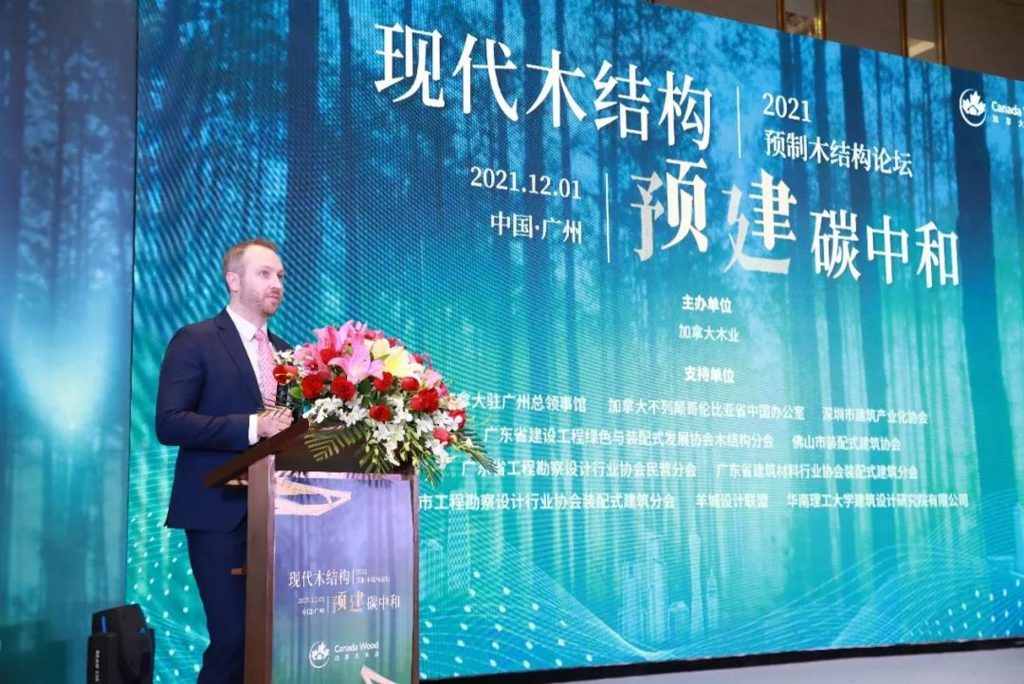
The Canadian Deputy Consul General and Senior Trade Commissioner Mr. Anthony Finch gave opening remarks at the forum, highlighting Canada’s strengths in forest products and the construction industry. With the recent conclusion of COP26, He emphasized the environmental goals that Canada is working towards achieving, and the dedication to sustainable economic development. He also highlighted the opportunities in green building solutions, intelligent construction technologies, the application of innovative cooling technologies, and other innovations that can help create healthy and comfortable buildings.

Zhang Tao, Chief Engineer and President of the Shenzhen General Institute of Architectural Design and Research (SZAD) said that with the goals of carbon neutralization in China, wood reflects the advantages of low carbon in processing and production. The combination of wood, steel, concrete and other materials can give full play to their respective advantages with hybrid structures being an important development trend for the future. He expressed his interest to strengthen cooperation with the Canadian wood industry, establishing long-term strategic cooperation and working together to promote the development of wood structures and prefabrication.
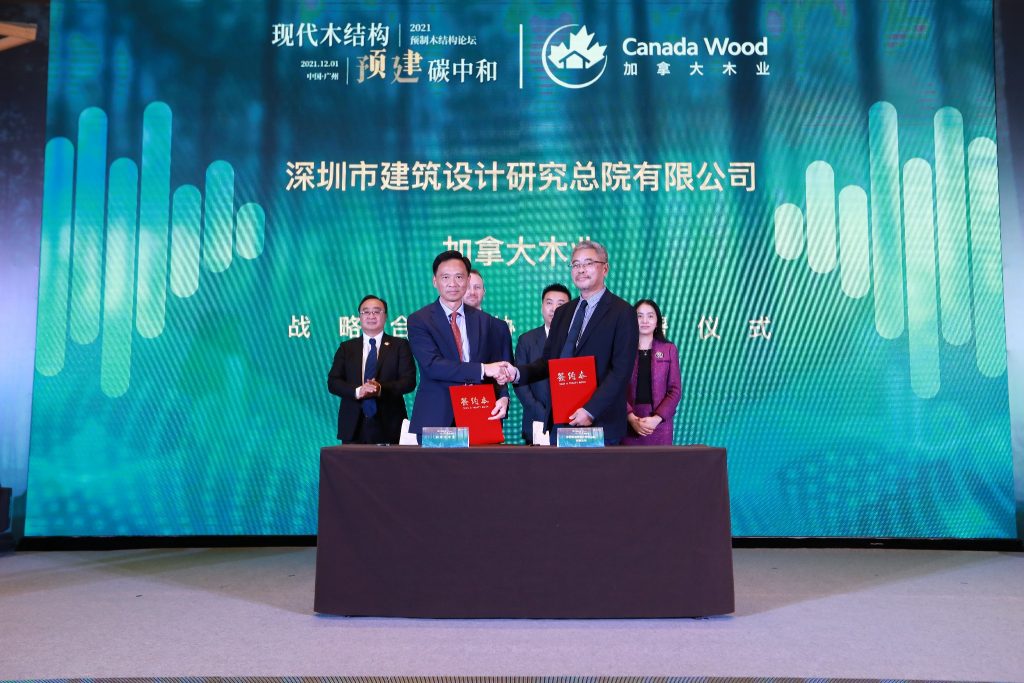
At the forum, CW China and SZAD signed an MOU agreement to collaborate on green building materials and timber structure projects. SZAD was founded in 1982 as part of the development of the Shenzhen Special Economic Zone. It grew from a local design institute servicing urban and rural construction in Shenzhen, to a group providing services across the world. SZAD has branches in 11 cities in China, with more than 3,000 team members who have worked on more than 9,500 projects over the last 30 years. More than 900 of their projects have won national, provincial, and municipal awards for excellence in engineering design. Both organizations have agreed to work together to study and develop localized prefabricated building systems and processes, promoting the application of WFC in construction, and carry out joint research on the new techniques of wood construction and the application of green building materials.
The forum included presentations by eight expert speakers from China and Canada to educate the audience on different angles of prefabrication and industrialized construction. The presentations covered case studies of wood structure projects and prefabricated buildings, interpretations of key government policies, current trends for rural construction with the campaign for rural revitalization, and other innovations with modern wood structures.
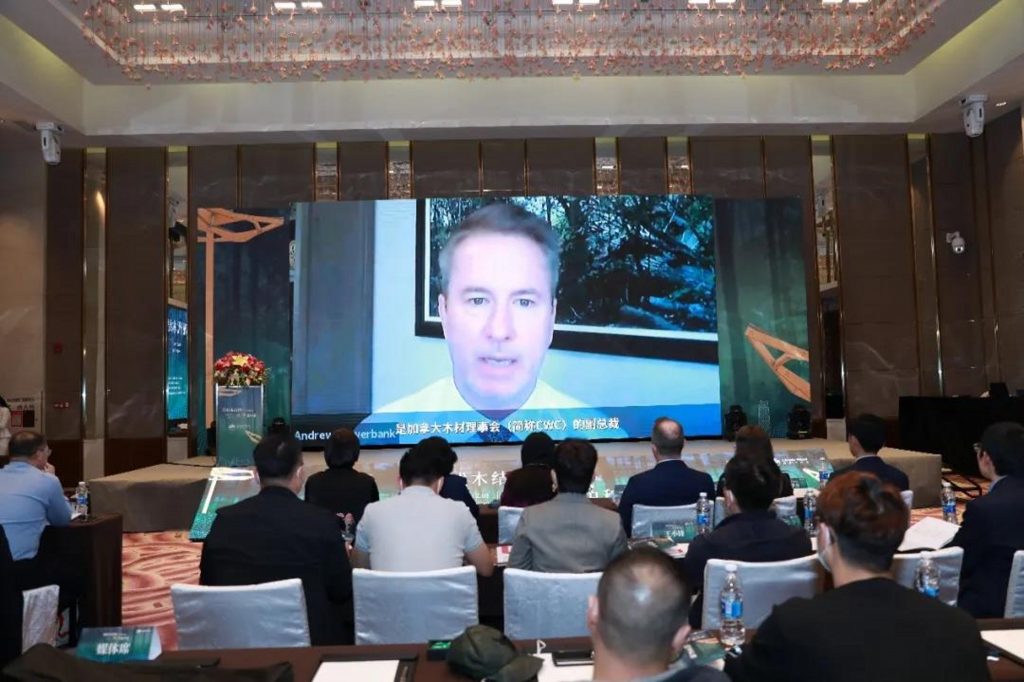
The dual goals of the 2030 Carbon Peak and 2060 Carbon Neutralization were emphasized by many of the speakers, which will make energy conservation and emission reduction key targets for the construction industry. Smart buildings, prefabrication and industrialized construction will have a strong development trend in China for the foreseeable future, with good prospects for low-carbon materials such as wood. A panel discussion was held with the speakers at the end of the forum, where they had a Q&A to share their perspectives on their professional fields, current trends in the market, and opportunities for future development.
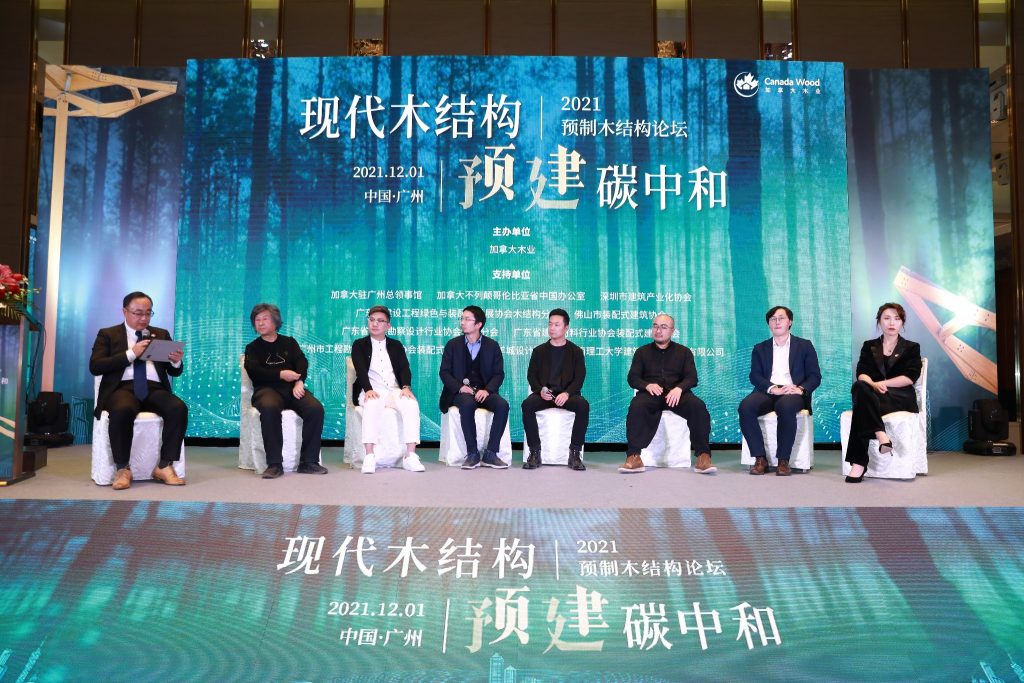
There remains much work to be done to expand the use of prefabrication in China. In Guangdong province, new projects have only recently started to achieve the Government policy for new projects to have 15% of their building components prefabricated, while Shanghai working towards an average of 50%. The industry for prefabrication will require further development of the entire industry supply chain, improvements in intelligent manufacturing technologies, and flexible solutions to apply prefabricated assemblies. Mandatory requirements and the government push towards carbon neutralization will drive rapid developments in these areas.
This forum highlighted the opportunities for the development of wood structures in China. Modern wood construction is increasingly recognized in China for being energy-saving and environment-friendly, contributing to the development of a low-carbon economy. With ongoing collaborations to promote training on the engineering and construction of wood structures, and exchanges on design possibilities for new projects and assembly technologies, there are ever-growing opportunities for the development of prefabrication and industrialized construction.


